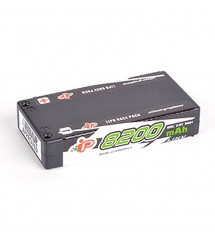You are here:
Intellect IPCC1S8200HV4 Lipo LiHV 120C 1S 8200mAh 3.8V
Intellect IPCC1S8200HV4 Lipo LiHV 120C 1S 8200mAh 3.8V Shipping restrictions.
Out of stock
Description
For 2019 are Intellect’s range of awesome LiPo batteries! The new LiHV HV4 will display a higher voltage and power than 2018 models.
Bench-marked against other leading brands, Intellect batteries provide higher performance for the same specification of battery.
2019 batteries are all Silicon-Graphene based LiHV. Silicon Graphene packs have improved cycle time when charged at 1C rates and can be charged at a higher C rating, with less risk of damage to the pack. LIHV technology has the ability to be charged to 4.35v per cell, but normal racing regulations allow up to 4.2v so LIHV are much safer.
To address market demands 2 options nominally are available Hi Power and Long RunTime.
BRCA/EFRA Legal as of April 2019
Modified and Stock Spec 8 Minute battery
18.5H x 47W x 93L mm
820000mAh
120C
150g
4mm Plugs
Connectors supplied.
Read all instructions before use.
Important Safety Instructions and legal notice (By IntellectAmerica)
LEGAL NOTICE
Since we have no control over the correct use, installation, application, or maintenance of our products, no liability shall be assumed nor accepted for any damages, losses or costs resulting from the use of the product. Any claims arising from the operating, failure or malfunctioning will be denied. We assume no liability for personal injury, property damage or consequential damages resulting from our product or our workmanship. As far as is legally permitted, the obligation to compensation is limited to the invoice amount of the affected product.
LITHIUM POLYMER SAFETY INFORMATION
1) DO NOT leave the battery in your model when charging
2) DO NOT leave unattended when charging
3) ALWAYS balance charge the battery
4) ALWAYS use a LiPo charging bag
5) YOU MUST use a Li-Poly specific charger to charge the pack (NiMH or NiCD only chargers WILL NOT WORK!)
6) YOU MUST not over discharge the Li-Poly battery pack
7) READ & UNDERSTAND the instructions carefully before operating this battery
NOTE: When using high energy Li-Polymer Batteries, please do not over-discharge or over-charge batteries as this will result in over heated batteries. Discharging capacity can’t exceed 80% of the max capacity of the pack after full charging to ensure a good cycle performance. It is recommended to fully charge a brand new battery before using and only discharge the battery 50% for first 5 cycles. Always monitor race time and/or set a low voltage warning on ESC (End voltage cannot be lower than 3.2v per cell). Do not use a battery that has too low a voltage.
Do not expose batteries to sunshine or store/charge batteries at the temperature above 35°C or in a closed car. The high temperature environment could cause damage to the pack or make it burst. If the battery becomes hot while fast charging, high current discharging or racing, do not charge the battery until it has cooled completely. Wait about 20 mins, then inspect prior to recharging.
Relating to the use of Li-Polymer batteries:
Please read the following content before using or charging your batteries.
- Lithium-ion Polymer (LiPo) batteries are volatile, End-users should take all measures against a risk of fire, personal injury and damage to property.
- In case of mishandling or defective, LiPo batteries may lead to explosions, fire, smoke venting and/or a risk of poisoning.
- End-users must be professionals, and have adequate knowledge and know-how of the battery maintenance and its usage.
- By purchasing LiPo battery, the end-user assumes all risks associated with this battery type, If you do not agree with these conditions, please consider NiMH or NiCd battery, or return the LiPo battery immediately point of purchase, before use,
- At all time, LiPo batteries should be kept away from children.
- Do Not store LiPo batteries in extreme environment
- Do Not short-circuit the battery
- Do Not dispose of battery in fire or water Remove LiPo batteries from devices when not in use Charge LiPo batteries only with approved balancing charger.
- It is the sole responsibility of end-users in assuring their chargers function properly.
- Do Not charge battery with polarity reversed Do Not leave battery unattended during charging
- By applying LiPo batteries to RC-modeling usage, end-users have to note that battery capacity would decrease gradually.
- Do Not dismantle and reassemble the battery packs by your own.
- The electrical details of individual cells may result in poor matching thereafter
- Stop using a battery in case of heating, deformation, leakage, gas venting, smoking or other abnormality.
- If leaked liquid gets in eyes, wash them with clean water and consult a doctor immediately
DISPOSAL PROCEDURE
- If any Li-Poly cell in the battery pack has been physically damaged, resulting in a swollen cell or a split or tear in a cell’s foil covering, do NOT discharge the battery.
- Place the Li-Poly battery in a reproof container or bucket of sand.
- Now the battery must be discharged. Discharging a Li-Poly battery – especially those with a large capacity – can take hours, days and even weeks to complete. For the fastest results, make sure each cell in your battery has a voltage no higher than 3.0V before continuing to Step 4.
- Choose a method below to achieve this:
- Option 1: Connect the battery to a Li-Poly specific charger and set the charger to “Discharge” mode. Set the discharge cutoff voltage to the lowest possible value and discharge the battery until it has finished its discharge cycle.
- Option 2: Use the battery in your model until the ESC low voltage cutoff initiates. Typically, the low voltage cutoff will be programmed to initiate when the individual cells reach 3.0 – 3.2V.
- Deep Discharge – Connect a 150 ohm resistor with a power rating of 2 watts, commonly found at most electronic stores, to the packs positive and negative terminals to safely deep discharge the battery. This procedure is safe with 1S – 6S batteries; keep in mind the larger the battery capacity, the more time the discharge requires. It is important to be patient as this step can take many days to complete. For example, a 3S 2200mAh battery at 50% charge will take over 80 hours to discharge to 0V.
- If possible use a volt meter and check the voltage of the battery. Ensure each cell is at 1.0V or lower.
- Submerge the battery into a bucket or tub of salt water. This container should have a lid, but it does not need to be air-tight. Prepare a plastic container (do not use metal) of cold water, and mix in 1?2 cup of salt per gallon of water. Drop the battery into the salt water. Allow the battery to remain in the tub of salt water for at least 2 weeks. This salt bath will neutralize any remaining power in the battery.
- Remove the Li-Poly battery from the salt water, wrap it in newspaper or paper towels and place it in the normal trash. Lithium Polymer batteries are land ll safe once drained of all power.
Additional information
| Weight | 99999 g |
|---|---|
| Brand | Intellect |
| Cell | 1S |
| Format | Shorty |
| Connection Type | 5mm Plug |
Related Products
Related products
-
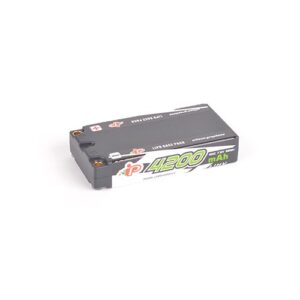
Intellect IPLP2S4200HV4 Lipo LiHV 120C 2S LP Shorty 4200mAh 7.6V
£42.99Out of stock
-
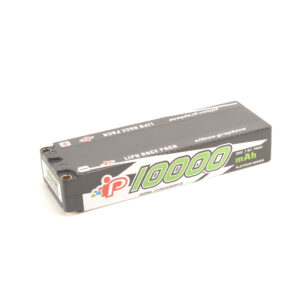
Intellect IPCC2S10000PT2 Intellect LiPo LiHV 10000mAh 2S 25.1mm Stick 7.6v
£82.992 in stock
-
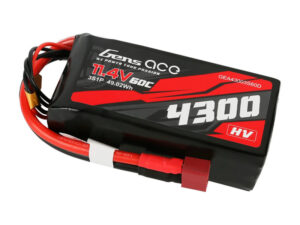
Gens Ace GC3H4300-60T Li-Po HV Car 3S 11.4V 4300mAh 60C with T-Type
£58.001 in stock
-
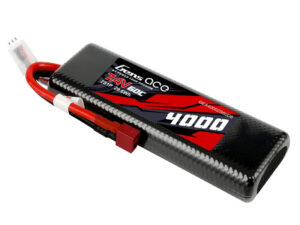
Gens Ace GC2S4000-60T Li-Po Car Hard Case 2S 7.4V 4000mAh 60C Bashing with T-Type
£30.882 in stock
-
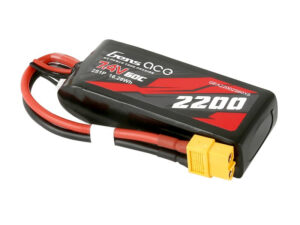
Gens Ace GC2S2200-60X6 Li-Po Car 2S 7.4V 2200mah 60C with XT60
£26.991 in stock

